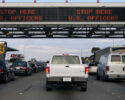Podcasts

Photo: NewsRadio WINA
In this segment, historian Rick Britton talks with Les Sinclair about TODAY IN U.S. HISTORY: On this day in 1903—on North Carolina’s Outer Banks—the Wright Brothers made their first attempt at powered flight. It failed, but it convinced them that manned powered flight was actually possible. Three days later they flew!
Since 1899, Wilbur and Orville Wright had been experimenting with flight. On the Outer Banks—where the winds favored their attempts—they tested their theories, and learned, using gliders. With over a thousand glides from atop Big Kill Devil Hill, the Wrights made themselves the first true pilots.
Through their glider experiments, they had solved the problems of sustained lift and how to control an aircraft while in flight. They were ready to truly fly, but they had to power their Flyer. Unable to find a suitable lightweight gasoline engine, they designed their own. It was crude and underpowered, but relatively little power was needed with efficient lifting surfaces and propellers. Using air tunnel data, they designed the first efficient airplane propeller, one of their most original achievements.
At their camp at Kill Devil Hills, NC, they mounted the engine on the new 40-foot, 605-pound Flyer with double tails and elevators. The engine drove two pusher propellers with chains, one crossed to make the props rotate in opposite directions to counteract a twisting tendency in flight. They were finally ready on December 14th. In order to decide who would fly first, the brother tossed a coin. Wilbur won the coin toss, but in this first attempt he oversteered after leaving the launching rail. The flyer climbed too steeply, stalled, and dove into the sand. The first sustained flight would have to wait on repairs. And the first true powered flight took place—with Orville at the controls—only three days later, on December 17, 1903.
(At 10:35, Orville—after traveling down the rail—kept the Flyer aloft until it hit the sand about 120 feet away. Into the 27-mph wind, the groundspeed had been 6.8 mph, for a total airspeed of 34 mph. The brothers took turns flying three more times that day. Wilbur’s second flight—the fourth and last of the day—was an impressive 852 feet in 59 seconds. The Wright machine had flown.)
ALSO: Starting January 23rd, Rick Britton will be teaching a Civil War class for the Albemarle Charlottesville Historical Society. Called “Albemarle & Charlottesville in the Civil War,” it comprises 7 2-hour sessions running from 6:30 to 8:30 p.m. Details are at cvillecenter.org, or call (434) 296-1492.









